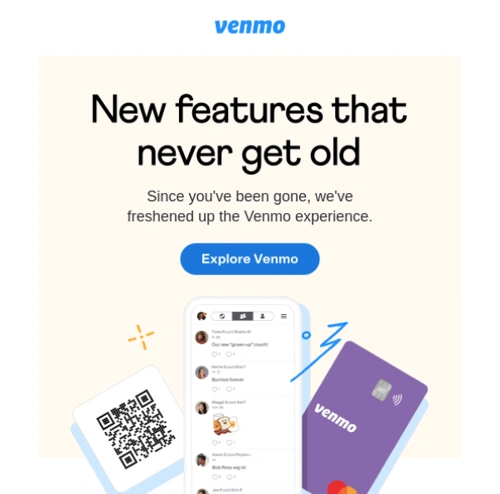Are you among the 73% of B2B marketers that currently use content marketing?[1] If so, you understand the value that well-written, high-quality content provides.
In fact, 74% of marketers credit their content marketing success to the value their content delivers.[2]

Source: Base: Content marketers who said their organizations were extremely/very successful with content marketing. 12th Annual Content Marketing Survey: Content Marketing Institute/MarketingProfs, July 2021. [2]
So, we are not here to question the validity of content marketing but rather to help you solidify your knowledge or get started if you don’t already harness the power of content marketing.
If you’ve already dabbled in content marketing and have seen some great results you are definitely on the right track, but do you know how to ensure ongoing value and success? In our professional opinion, the key is a well-crafted B2B content writing strategy.
Whether you’re new to B2B content writing or refining your existing strategy, this guide will provide you with valuable insights to elevate your business.
Let’s dive in.
What is B2B content writing?
B2B content writing is a specialized form of writing that focuses on creating valuable content for businesses. It should always be part of a successful marketing strategy as it provides information, solutions, and insights to help businesses make decisions. This type of content can take many forms—including blog posts, white papers, case studies, and more. Each piece of content is crafted with a specific business audience in mind, addressing their unique needs and challenges, thereby providing the inside information you need about your target audience.
Forbes, through a report involving a substantial sample of 38,000 professionals in the B2B sector, has come to an interesting conclusion. The report suggests that the volume and type of B2B content consumed by your audience can significantly influence their purchasing decisions. [3] However, a study conducted by Content Marketing Institute and Marketing Profs found that only 41% of B2B companies have a documented content marketing strategy. [4]
This tells us that there’s a strong opportunity for businesses to leverage B2B content writing to stand out from the competition and connect with their target audience. This is an opportunity we understand all too well.
Types of B2B content
B2B content comes in various forms—each serving a unique purpose in your content strategy. It’s the fuel that drives many digital marketing disciplines, including SEO, social media, and email marketing.
Let’s look at some of these types of content.
B2B saas content writing
Creating content for B2B SaaS companies involves translating complex software concepts into accessible narratives. This process requires a deep understanding of the product, the target audience, and – most importantly – the unique challenges they face.
The tone and voice of the content should align with the brand persona and resonate with the target audience. The goal is to create engaging, informative, and valuable content that positions the SaaS product as the ideal solution to the needs of their potential customers’ needs.
Example: Ahrefs is a well known SaaS in the SEO industry. And their blog is a goldmine of information that constantly provides value to their customers (and potential customers)
Here’s a typical article from them:

Key aspects of this process include:
- Crafting product descriptions that illustrate how the software can address specific issues and enhance operational efficiency.
- Developing blog posts that range from practical guides to industry insights—with the aim of establishing the company as a trusted authority in their field.
- Designing user guides that are clear, concise, and easy to follow, ensuring customers can fully utilize the software.
B2B interactive content
Interactive content in the B2B space is a potent tool that can amplify engagement, gather valuable data, and encourage a loyal customer base. This dynamic content requires active participation, leading to a more immersive and personalized experience. The aim here is to create content that not only informs but also engages the audience—providing a unique and valuable experience that sets your business apart.
Here are three key types of interactive content that can be effectively utilized:
- Quizzes: These are designed to help clients identify the best product or service for their needs. Quizzes should be succinct, provide clear answers, and guide the audience toward the next step in their journey.
- Interactive Videos: These videos contain elements like hotspots, polls, and questions that allow the viewer to customize their viewing experience.This Honda Civic commercial might be one of the best interactive videos out there. It was created by the global ad agency Wieden + Kennedy. It’s promoting the car’s versatility with great ease by giving viewers the chance to control the car’s range of possibilities simply by clicking the “R” key on their keyboard. Give it a try and see the car shift between a reliable family car and the perfect getaway vehicle.
- Calculators: Calculators in certain niches can assist customers in understanding the potential benefits of a product.
For example—NerdWallet offers a compound interest calculator that allows users to calculate the future value of their savings based on their current savings, monthly deposits, and interest rate.

Podcasts
Podcasts have become a powerful tool in the B2B marketing landscape, offering a unique way to engage audiences and share valuable insights. Incorporating podcasts into your B2B marketing strategy can help you reach a wider audience, engage with them more deeply, and establish your brand as an authority in your industry.
A study on LinkedIn found that 44% of senior-level employees regularly tune into podcasts—highlighting their potential reach within the business community.

Here are three reasons why podcasts are gaining traction in B2B marketing:
- Audience Engagement: Podcasts offer a unique opportunity to engage audiences in a conversational and personal manner. They provide a platform for thought leaders to share insights, discuss industry trends, and connect with listeners on a deeper level.
- Evergreen Content: Unlike live events or time-sensitive content, podcasts can be accessed anytime, anywhere. This makes them a potent source of evergreen content that continues to engage audiences long after they are published.
- Knowledge Sharing: Podcasts serve as a platform for sharing expertise and insights. They can feature interviews with industry experts, discussions on the latest trends, and practical advice, providing listeners with valuable knowledge.
Creating a B2B content writing strategy
At the heart of a successful B2B content writing strategy is a deep understanding of the audience. Knowing who your audience is, their needs and their challenges is the first step in creating content that resonates. As B2B content marketers ourselves, we believe your audience’s informational needs should always take precedence over your company’s promotional message, this is a straightway to ensure your content performs best.
Here are the key aspects every company should consider:
- Understanding Your Audience: The first step in creating a B2B content writing strategy is to understand your target audience. What are their needs?
- Creating Valuable Content: The content you create should provide value to your audience. The first way to make it valuable is to create content that resonates with your target audience and addresses their needs. A content’s value is also related to the quality you produce. Improving the quality of your content is perhaps the most effective content marketing tactic.
- Optimizing for SEO: Creating high-quality content that is optimized for search engines can improve your website’s search rankings. This – in turn – can drive more traffic to your site and increase your chances of generating leads.
- Measuring and Optimizing Results: Finally, it’s crucial to measure the success of your content marketing strategy and optimize it based on the results. Tools like Google Analytics can help you track how much traffic your content generates for your website and which pages are most effective in converting visitors into leads.
Remember, a successful B2B content writing strategy is not just about selling products or services. It’s about building relationships and providing value to your audience. By doing this, you can generate more leads, build brand awareness, and – ultimately – drive revenue growth.
SEO-friendly content
Leveraging SEO can turn your online presence from a whisper into a shout, directly reaching potential partners in need of your services.
- Relevant Keywords: Let’s take a B2B firm that provides cloud-based CRM solutions. Phrases such as “Cloud CRM software,” “SaaS CRM solutions,” or “Best CRM for small businesses” could be keywords. These phrases can seamlessly fit into blogs, white papers, or product descriptions. Metadata like page titles and alt texts are also essential homes for these keywords.
- Landing Page Optimization: Take a B2B software development company’s website, for instance. Their landing page could be optimized with keywords like “custom software solutions” or “enterprise software development.” These keywords should blend with useful, engaging content to enrich the user experience and rank higher on search engine results.
Now, let’s get technical.
- Website Technical Aspects: A logistics B2B company’s website should be straightforward and quick to load. If a potential partner Googles “supply chain solutions” and lands on their page, they should be able to navigate and understand the offered services with ease. HTML tags and schema markup can support this readability, increasing the chances of higher ranking.
The power of blogging for SEO is also undeniable.
- Blogging for SEO: An accounting B2B firm could maintain a blog, discussing topics like “best practices for tax compliance” or “efficient bookkeeping methods.” These posts filled with target keywords act as magnets, pulling in interested businesses and boosting the website’s visibility.
B2B content strategy thrives when SEO-friendly content paves the way. By identifying target keywords, optimizing landing pages, refining technical aspects, and maintaining an engaging blog, B2B companies can make the most of their SEO efforts.
B2B content writing examples
A diverse mix of content types is essential for a robust B2B content strategy. Each type of content – whether it’s a blog post, a case study, or an email newsletter – brings its own strengths to the table, helping to engage your audience, showcase your success, and keep your audience informed.
Let’s look at three examples:
- Blog Posts: Blogs are a staple in B2B content marketing. They provide a platform for businesses to share insights, industry news, and thought leadership.
For instance, our own blog section. We strive to be a resource for many marketers, offering in-depth pieces of content on a wide range of topics from SEO to PPC campaigns, and much more.

- Case Studies: Case studies are powerful tools for showcasing the value of your products or services. They provide real-world examples of how your business has helped customers, making them particularly effective for B2B audiences.
A great example is Cisco’s extensive library of case studies, which demonstrate how their technology solutions have helped businesses around the world.

- White papers: these are the perfect excuse to write authoritative documents where B2B businesses can provide in-depth information and insights on a specific topic that is relevant to their target audience, they can also provide an analysis of a problem or industry trend. White papers can be used to educate your potential customers, influence them and hopefully generate leads.
- Webinars: Webinars allow businesses to share their expertise and engage with their audience in a live, interactive format.
For example, Adobe’s “Think Tank” webinars bring together industry leaders to discuss topics like digital transformation and customer experience.

What is B2B content marketing?
After understanding the importance of creating engaging B2B content, the next step is to market it effectively.
B2B content marketing is not just about broadcasting your content; it’s about ensuring that your content reaches the right audience and prompts them to take action. To achieve this, you can follow our recommended steps below:
Step 1 – Determine Your Unique Value Proposition
In the vast digital landscape, your content needs to shine brightly to attract attention. It’s not enough to be different in 2023; it’s about providing something of value that’s unique to your brand.
For instance, a B2B legal consultancy might differentiate itself by offering easy-to-understand breakdowns of complex legal concepts. This unique value proposition (UVP) becomes the cornerstone of their content marketing strategy.
But how do you determine your UVP? Here are some key things to keep in mind:
- Identify Your Strengths: What does your company do exceptionally well?
- Understand Your Audience: What does your target audience value?
- Analyze Your Competitors: What are your competitors doing in terms of content marketing?
For example, Slack, a B2B communication platform, has a unique value proposition in its content marketing. They provide valuable insights and tips on improving workplace efficiency and communication, leveraging their strength as a leading communication tool.
Their blog is a treasure trove of articles that help businesses navigate the challenges of remote work, team collaboration, and more.

Remember, your UVP is not static. As your company evolves and your audience’s needs change, your UVP should adapt. Keep testing, refining, and improving to ensure your content continues to deliver unique value.
2 – Understand Your Audiences So You Can Market To Them With Ease
To create and market relevant content, you need to understand your audience. This could be a high-level audience (e.g., repeat product purchasers), a segment (e.g., work-from-home parents), or a persona (e.g., In-Charge Charles).
For example, a B2B logistics company might identify its top audiences as supply chain managers, procurement officers, warehouse supervisors, shipping coordinators, and freight brokers.
By recognizing these key segments, the company can develop tailored marketing strategies that address the unique needs and pain points of each audience.
Understanding your audience is the foundation for successful marketing. By gaining insights into their motivations, preferences, and challenges, you can effectively craft targeted written content and engage with them on a more personal level.
3 – Promoting Your Content: Once you’ve created your content, you need to promote it. This could involve sharing it on social media, sending it to your email list, or using SEO strategies to increase its visibility in search engine results.
The goal is to get your content in front of as many people as possible, particularly those who are likely to be interested in what you have to offer.
Some strategies might include:
- Sharing your content on LinkedIn or Twitter to reach a professional audience.
- Sending out a regular email newsletter that highlights your latest content.
- Perhaps the most useful method would be to use SEO strategies to improve the visibility of your content in search engine results. Creating an SEO strategy will have a strong impact on your content as it is the best way to ensure it reaches your audience. However valuable your content might be, if it’s not reaching the needed people then you are wasting your time.
Step 4 – Measuring Your Success: Finally, it’s important to track the success of your content marketing efforts. This involves monitoring key metrics like website traffic, social media engagement, and conversion rates.
By measuring your success, you can identify what’s working, what’s not, and make necessary adjustments to your strategy.
For instance:
- Use Google Analytics to track website traffic, user engagement, and your overall content performance.
- Monitor social media engagement to see how your audience is interacting with your content on platforms like LinkedIn and Twitter.
- Track conversion rates to see how many of your audience members are taking the desired action after engaging with your content.

B2B content marketing funnel
In order to create a B2B marketing strategy you can start by implementing a B2B content marketing funnel, which will help you guide and organize your efforts to make sure you are taking advantage of all your assets.
Creating a B2B content writing strategy involves:
- Understanding your audience
- Attracting them with valuable content at the top of the funnel
- Engaging them with informative content in the middle
- Converting them into customers at the bottom
- Focusing on retention after the purchase
Let’s look at this in a little more detail:
Top of the Funnel (TOFU) – Attraction:
At the top of the funnel, the goal is to attract your target audience. This is the awareness stage of your brand. Create content that grabs their attention and provides value.
Examples of content for TOFU include the blog posts we mentioned earlier, informative videos, and social media posts.
Middle of the Funnel (MOFU) – Engagement:
The middle of the funnel is the consideration stage, you want to engage your audience and nurture their interest in your products or services. Provide more in-depth content that educates and builds trust.
This could include the aforementioned webinars, case studies, and email newsletters.
For example, you could host a webinar on “Best Practices for Implementing Marketing Automation” or share a case study showcasing how your product solved a specific problem for a client.
This stage is when potential clients are aware of a problem or opportunity and are researching potential solutions or approaches.
Bottom of the Funnel (BOFU) – Conversion:
At the bottom of the funnel, the focus is on converting leads into customers. Provide content that convinces your audience to take the desired action—such as making a purchase or requesting a demo.
This could include product demos, free trials, and customer testimonials. For example, you could offer a free trial of your software or share a testimonial video featuring a satisfied customer.
Post-Purchase – Retention:
Once a customer has made a purchase, your content should focus on retaining their loyalty and building a long-term relationship. Provide ongoing support, resources, and exclusive content to keep them engaged.
For instance, you could offer exclusive access to new features, provide a knowledge base with helpful articles, or send personalized email campaigns with tips and updates.

Example: Email campaign (Image source)
B2B content marketing services
By now it should be abundantly clear just how important a content marketing strategy can be for B2B companies: it allows your business to speak directly to the companies that need your services the most and showcases your deep understanding of their challenges and how your offerings can provide solutions.
We hope this guide can help you take the first steps into creating your own B2B content writing strategy, but we know firsthand just how time-consuming it can be. Allow us to take it off your hands and not only create but execute the strategy for you.
At Nomadic Advertising, we specialize in creating tailor-made strategies that are data and technology-driven. Our team of experts can help you with Search Engine Optimization, Google Ads (PPC) Management, and Social Media Marketing, all of which are key components of a successful B2B content marketing strategy.
Whether you need assistance with crafting engaging blog posts, designing a user-friendly website, or managing your social media accounts—our team has the expertise to deliver results at every part of the B2B content marketing funnel.
We’ve helped businesses across a variety of sectors enhance their online presence and reach new heights. And now we’d like to help you. Ready to see how a B2B content marketing strategy can benefit your business?
Contact us to book a FREE 30-minute consultation and let’s start crafting your personalized strategy today.
Transform your business with Nomadic Advertising and experience the game-changing power of B2B content marketing.
key takeaways
- B2B content writing is a specialized form of writing that creates valuable content for businesses to help them make informed decisions.
- Different types of B2B content serve unique purposes in a content strategy and can include B2B SaaS content writing, interactive content, white papers, and more. These content types require a deep understanding of the product, the target audience, and their unique challenges to provide value and engage the audience.
- A successful B2B content writing strategy begins with understanding your audience and their needs, creating valuable content that resonates with them, optimizing the content for SEO, and measuring and optimizing results.
- SEO-friendly content increases visibility by using relevant keywords, creating high-quality content, and optimizing the website’s technical aspects. In order for your content to rank high in search results it’s critical that it attracts and retains audience attention.
- A diverse mix of content types such as blog posts, case studies, and webinars is essential for a robust B2B content strategy. Each type of content brings its own strengths, helping to engage your audience, showcase your success, and keep your audience informed.
Sources
[1] https://www.searchenginejournal.com/content-marketing-statistics/475206/#close
[2] https://contentmarketinginstitute.com/wp-content/uploads/2021/10/B2B_2022_Research.pdf
[3] https://www.forbes.com/sites/allbusiness/2023/05/04/a-2023-report-proves-b2b-content-drives-purchases-heres-what-b2b-customers-want-to-see/?sh=e8a8a6e68c00
[4] https://contentmarketinginstitute.com/wp-content/uploads/2019/10/2020_B2B_Research_Final.pdf






